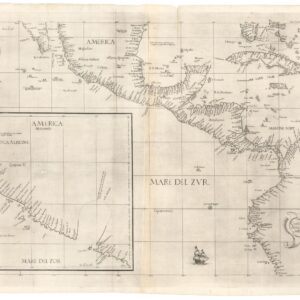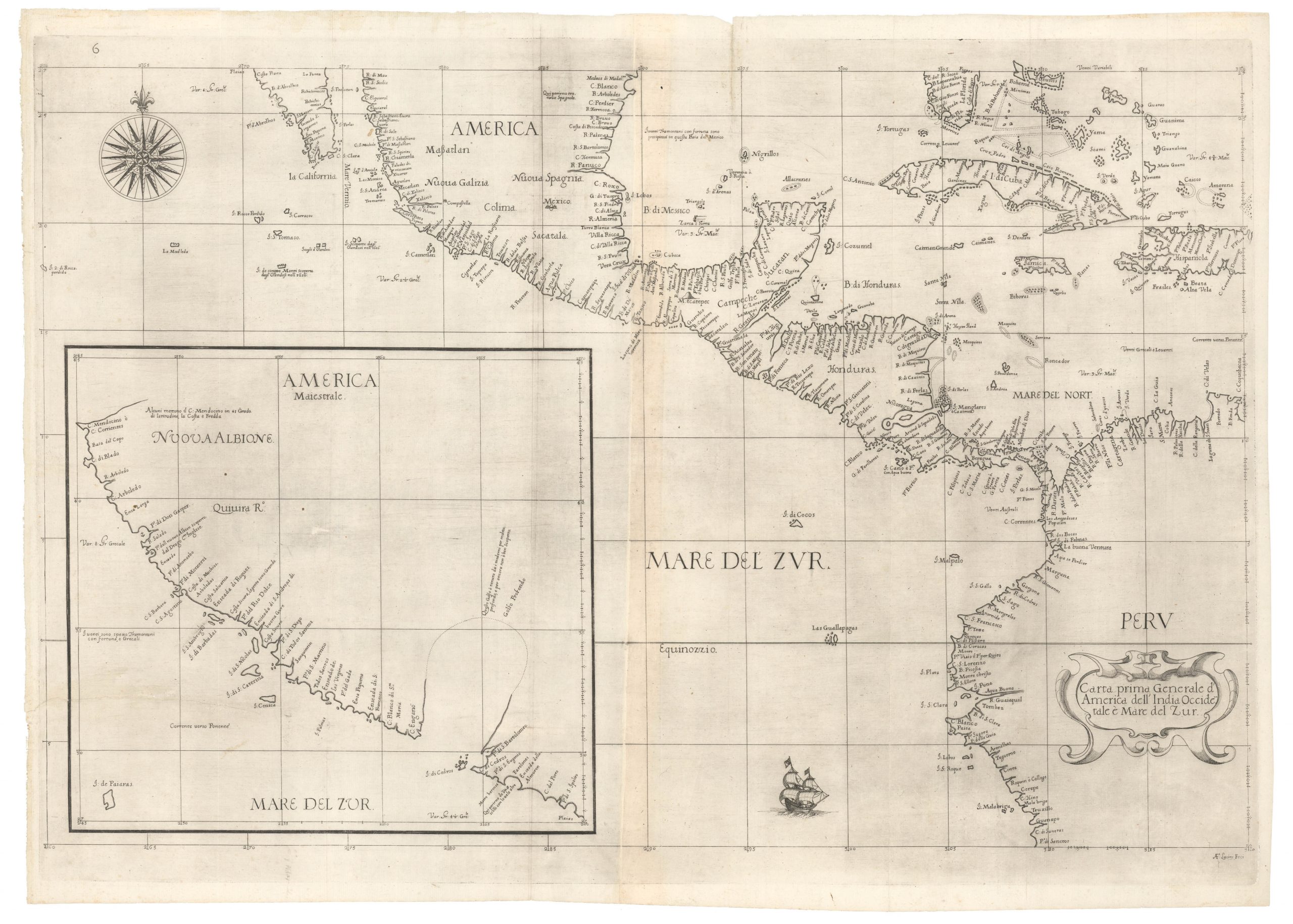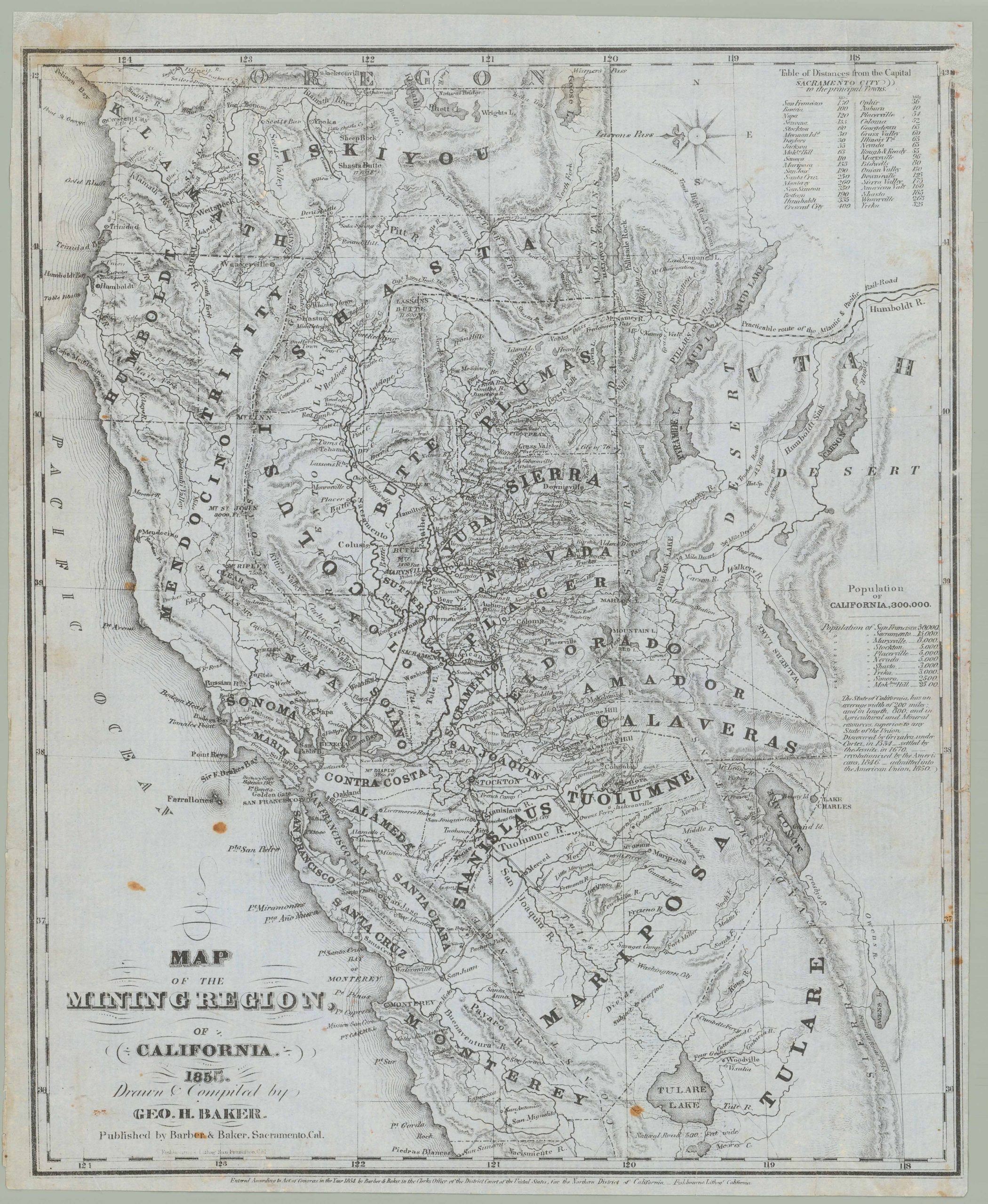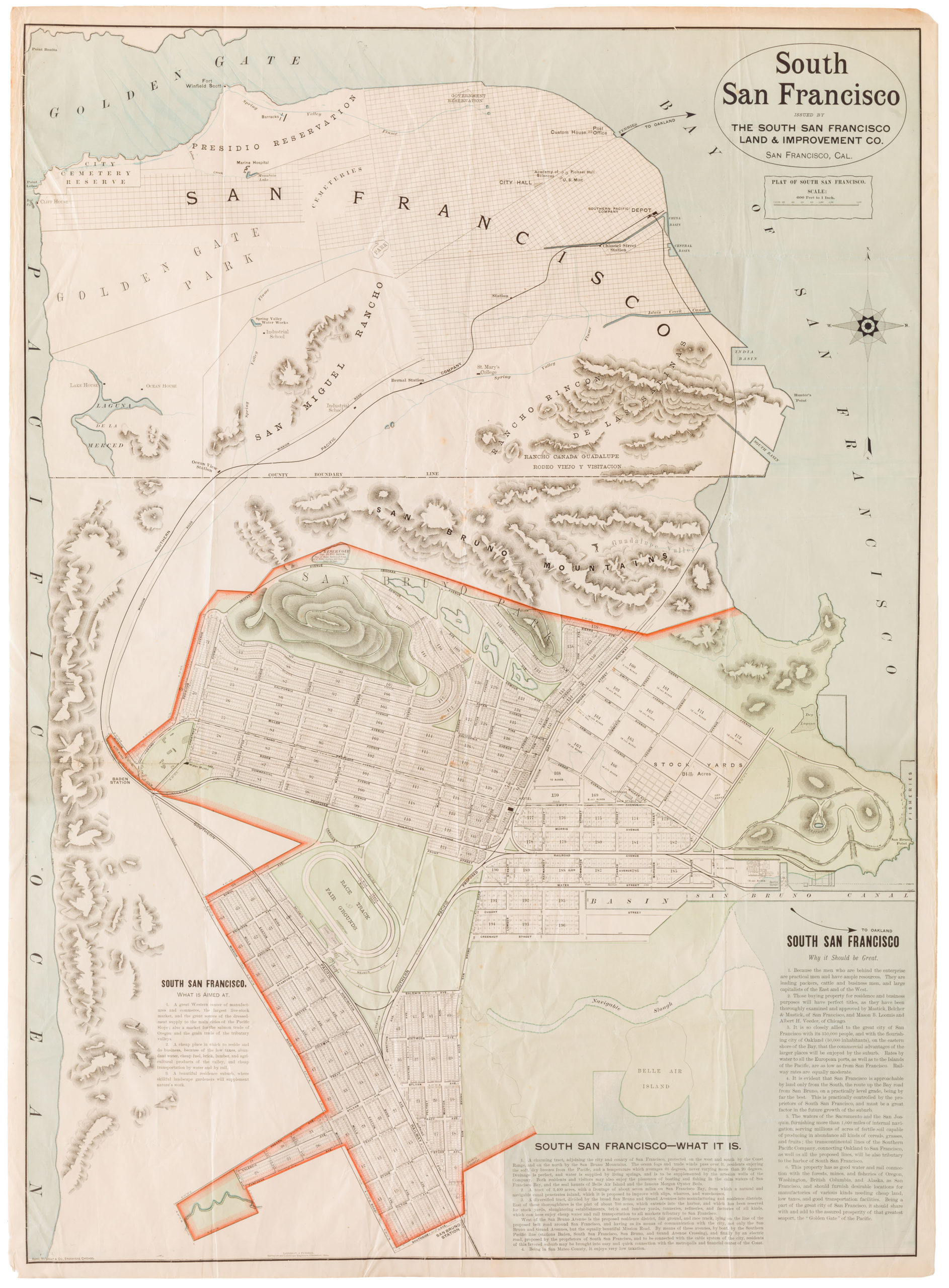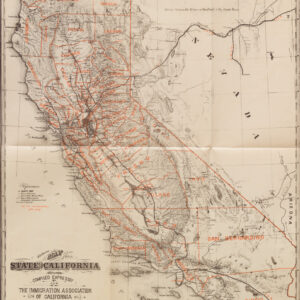One-of-a-kind, unrecorded early 1900s manuscript map of Folsom, California.
Map of the Town of Folsom California
Out of stock
Description
This is an early manuscript map depicting the original town grid of Folsom, California, oriented so northwest is at the top.
The story of Folsom is told by the two most prominent features on the map, the American River and the Sacramento Valley Railroad line. Indeed, Folsom is a product of the discovery of gold 20 miles north along the American River, as thousands of migrants soon arrived in the Sierra foothills to seek their fortunes. Mining camps composed of a variety of different communities were the first Gold Rush era settlements in the area, and were located along the river. One such community was made up of African Americans and was known as ‘Negro Bar,’ which is indicated on our map. Another important group of arrivals were Mormon immigrants, who had their own riverside mining camp known as Mormon Bar. While not labeled on the map, we do note a Mormon St. within the town, an enduring toponymic legacy.
The town itself is comprised of a fourteen by seven block grid with twenty named streets. Remarkably, all the streets names are the same today as they are on our map, and indeed it would seem since the inception of city. A major difference between the present-day city and that portrayed on the map is the conspicuous railroad line bisecting the town. This was the Sacramento Valley Railroad, which swept through the town on the same line as today’s Greenback Ln. and Folsom Blvd. A train depot, located in the open space numbered 20 and 21 and the map, is now the area surrounding the Folsom Historic Ice Rink and amphitheater.
Folsom is in many ways a classic ‘railroad town.’ Joseph Libbey Folsom saw the potential of the site as a transportation hub and purchased the land from the heirs of San Francisco merchant William Alexander Leidesdorff. He hired Theodore Judah, the pre-eminent mid-19th century engineer working in California, to survey the town, which was initially named Granite City (when Folsom died in 1855, the town was renamed after him). Theodore Judah was above all a railroad engineer. The completion of the Sacramento Valley Railroad linked Folsom to both deeper gold country and larger urban markets, facilitated its growth and importance as a de novo 19th century California urban settlement.
Separately-issued maps of Folsom are very rare.
Cartographer(s):
Condition Description
Ink manuscript map on drafting linen. Very good or better condition.
References
Special thanks to historian Kaitlyn Scott at the Folsom Historical Society for her help on this map.
